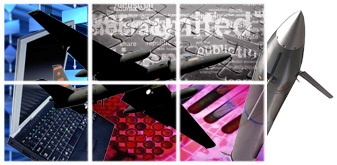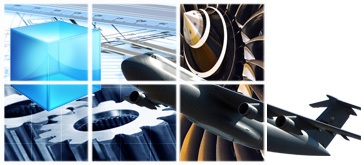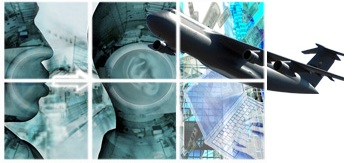An important component in the design of new software systems, both with respect to schedule and cost, is the possible reuse of existing systems and knowledge sources in the new design. In other words, how can the redesign of a system’s ontology—the unique interrelations among the system’s components and entities—most effectively utilize existing systems and sources in meeting the needs that drive the new design? KBSI, leveraging their experience in knowledge based applications, tackled these challenges in a U.S. Navy sponsored project that is seeking automated methods and technologies for rapidly and cost effectively analyzing, redesigning, and re-engineering complex systems.
Toolkit for Agent-based Knowledge Extraction (TAKE™)
KBSI used a hybrid approach combining ontology engineering methods with cutting-edge knowledge discovery techniques to extract, analyze, and map ontologies from knowledge and data sources. The TAKE™ technology helps users to rapidly and cost effectively analyze, redesign, integrate and/or re-engineer their enterprise systems.
In the early phase of the initiative, KBSI established a novel TAKE™ ontology reuse and application method, designed innovative ontology analysis and ontology extraction algorithms, and designed the TAKE™ architecture. These innovations include the novel application of information fusion techniques for aggregated ontology similarity assessment and mapping the application of advanced knowledge discovery techniques for automated ontology extraction and mapping from multi-source text data. A demonstration of a prototype TAKE™ software tool was also demonstrated on a focused, high payoff Navy transition application scenario. The TAKE™ technology provides innovative solutions that address the problems associated with rapidly designing, developing, and deploying large scale knowledge based applications. KBSI’s overall approach in the initiative conceptualized and validated a framework and a methodology for sustainable knowledge management that encompasses the entire knowledge life cycle: capture/discovery, representation, analysis, validation, storage, retrieval, (in-context) delivery, and evolution over extended periods of time.
Hybrid Framework for Information Visualization Enablers (HI-FIVE)
HI-FIVE is a novel model-based, “no-programming required” approach to information visualization. The tool provides an extendible framework for rapidly developing, configuring, and managing data displays, enabling you to better understand “system of systems” data.
An important challenge for any enterprise, particularly one as large as the Department of Defense, is making the most of your data: how to achieve true enterprise information integration in a manner that enables access to data from multiple, often divergent domains. In meeting this challenge, the DoD is integrating new and legacy systems into federated “systems of systems.” Such an approach necessitates that data from these multiple domains also be integrated—i.e., actionable across all domains—and that it be flexible enough to be used in many, unanticipated ways.
Success Story: Ontology-Driven Search Capabilities ( JACKALFISH®)
Like any other large-scale industry managing complex engineering projects, NASA and the Department of Defense face the persistent challenge of effectively discovering related information and data among distributed project teams and information sources. The Small Business Innovation Research (SBIR) office addressed this challenge by awarding KBSI a multiple phase SBIR project to design and develop an Ontology Driven Integration Framework (ODIF) that establishes a common ontology for integrating and searching diverse data sources.
Ontology-Driven Integration Framework (ODIF)
Ontology-driven Integration Framework (ODIF) automates the sharing and integration of information among different organizations. ODIF applies a common ontology for integrating diverse data sources and uses knowledge extraction techniques and ontology analysis methods to extract knowledge from distributed, unstructured text sources.
An important challenge for any large enterprise is effectively sharing and integrating information among the organizations and diverse systems that make up the enterprise. If you’re the U.S. Air Force or the Missile Defense Agency (MDA), enterprises of staggering size, sweep, and application and systems diversity, this challenge is particularly complex.





